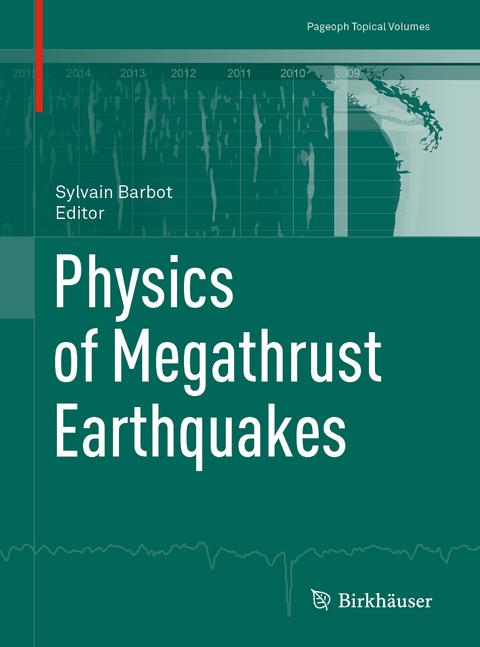
Physics of Megathrust Earthquakes
Springer International Publishing (Verlag)
978-3-030-43571-4 (ISBN)
This topical volume on the physics of megathrust earthquakes investigates many aspects of the earthquake phenomenon, from the geodynamic setting of subduction zones, to interseismic and postseismic deformation, slow-slip events, dynamic rupture, and tsunami generation.
Previously published in Pure and Applied Geophysics, Volume 176, Issue 9, 2019
The chapters "Interseismic Coupling and Slow Slip Events on the Cascadia Megathrust", "Effect of Slip-Weakening Distance on Seismic-Aseismic Slip Patterns", "Physics-Based Scenario of Earthquake Cycles on the Ventura Thrust System, California: The Effect of Variable Friction and Fault Geometry", and "A Secondary Zone of Uplift Due to Megathrust Earthquakes" are available as open access articles under a CC BY 4.0 license at link.springer.com
Sylvain Barbot is an Assistant Professor at the University of Southern California, Los Angeles, USA, where he conducts research on lithosphere dynamics and the seismic cycle. His current research interests include the micromechanics of friction, the rheology of plastic flow, and crustal deformation. He uses numerical simulations to explain geodetic observations, seismological data, and laboratory measurements. His long-term goal is to understand the mechanics of rock deformation at various time and length scales to explain the earthquake phenomenon.
Physics of Megathrust Earthquakes: Introduction.- Energy and Magnitude: A Historical Perspective.- A Damped Dynamic Finite Difference Approach for Modeling Static Stress-Strain Fields.- Interseismic Coupling and Slow Slip Events on the Cascadia Megathrust.- Interseismic Coupling in the Central Nepalese Himalaya: Spatial Correlation with the 2015 Mw 7.9 Gorkha Earthquake.- Role of Lower Crust in the Postseismic Deformation of the 2010 Maule Earthquake: Insights from a Model with Power-Law Rheology.- Green's Functions for Post-seismic Strain Changes in a Realistic Earth Model and Their Application to the Tohoku-Oki Mw 9.0 Earthquake.- Quasi-Dynamic 3D Modeling of the Generation and Afterslip of a Tohoku-oki Earthquake Considering Thermal Pressurization and Frictional Properties of the Shallow Plate Boundary.- Effect of Slip-Weakening Distance on Seismic-Aseismic Slip Patterns.- Physics-Based Scenario of Earthquake Cycles on the Ventura Thrust System, California: The Effect of Variable Friction and Fault Geometry.- Fully Coupled Simulations of Megathrust Earthquakes and Tsunamis in the Japan Trench, Nankai Trough, and Cascadia Subduction Zone.- A Secondary Zone of Uplift Due to Megathrust Earthquakes.
| Erscheinungsdatum | 29.04.2020 |
|---|---|
| Reihe/Serie | Pageoph Topical Volumes |
| Zusatzinfo | V, 256 p. 129 illus., 115 illus. in color. |
| Verlagsort | Cham |
| Sprache | englisch |
| Maße | 193 x 260 mm |
| Gewicht | 563 g |
| Themenwelt | Naturwissenschaften ► Biologie ► Ökologie / Naturschutz |
| Naturwissenschaften ► Geowissenschaften ► Geologie | |
| Naturwissenschaften ► Geowissenschaften ► Geophysik | |
| Schlagworte | Cascadia Megathrust • Earthquake • Geodesy • Gorkha Earthquake • Maule Earthquake • Nanakai Trough • Numerical simulations • Seismic Hazards • subduction zones • Tectonics • Tohoku-Oki Eearthquake • Ventura Thrust System |
| ISBN-10 | 3-030-43571-7 / 3030435717 |
| ISBN-13 | 978-3-030-43571-4 / 9783030435714 |
| Zustand | Neuware |
| Haben Sie eine Frage zum Produkt? |
aus dem Bereich


